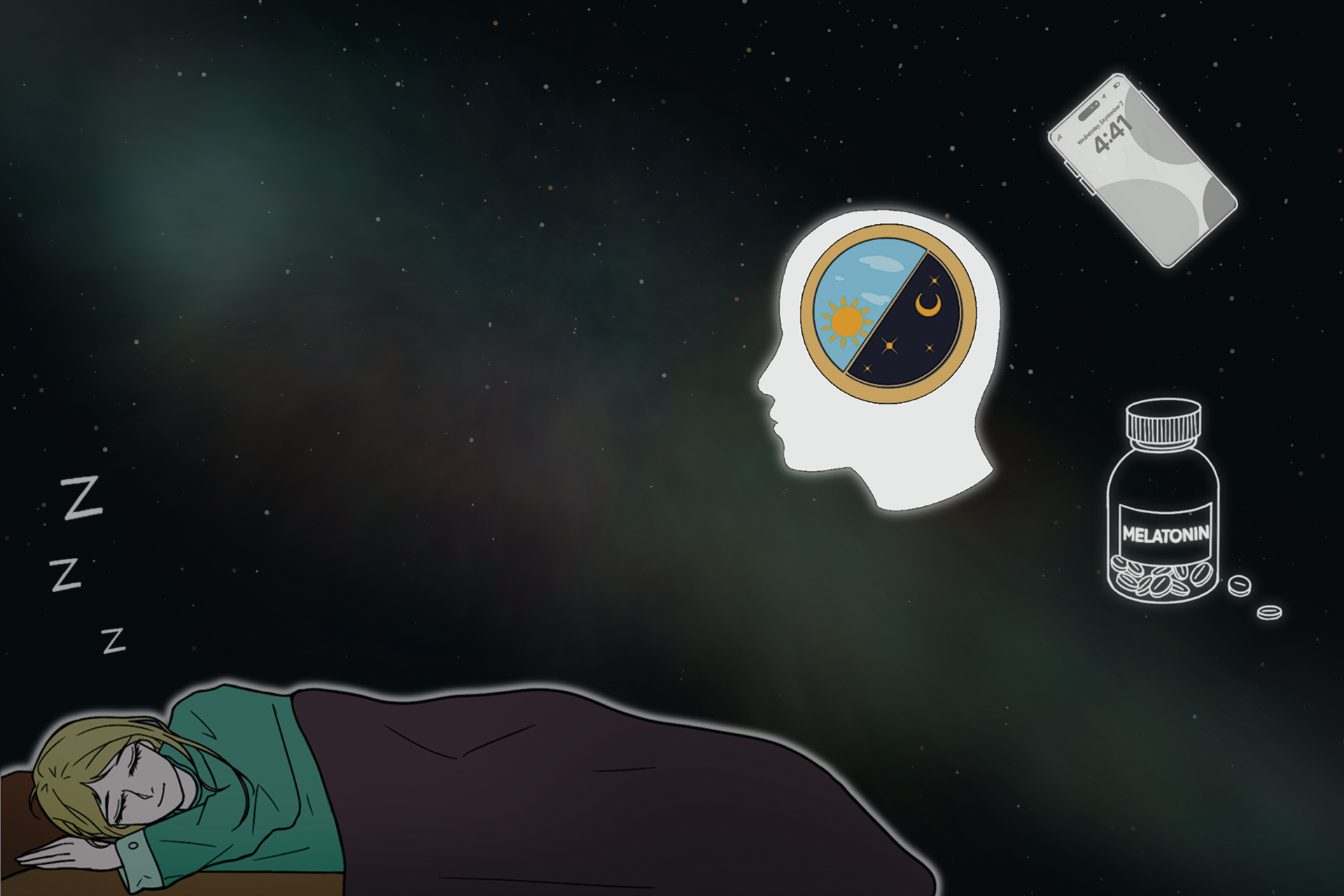How to Regain Your Sleep from Your Smartphone?
By Jane Yang 楊靜悠

In our modern, hyper-connected world, smartphones have become ubiquitous companions for many of us. However, the convenience and allure of these devices may come at a cost, particularly when it comes to our sleep habits. Do you find yourself habitually reaching for your smartphone as you wind down for the night, only to find yourself hours later still scrolling through endless social media feeds or watching video after video? If so, you're not alone. Let’s explore the impact of bedtime smartphone use on our circadian rhythms — the body's internal clock that controls our sleep-and-wake cycles. Toward the end, we will provide some insights on how to regain a restful sleep.
Blue Light from Electronic Screens
Modern electronic screens, from smartphones to computer monitors, utilize the RGB color model to display a wide range of hues. This method relies on mixing varying intensities of the three primary colors — red, green, and blue. However, what many don't realize is that blue light has a profound impact on our circadian rhythms [1, 2].
Melatonin-Suppressing Effect of Blue Light
Our body’s biological clock needs to be calibrated every day, so that our behavior and physiology can optimally adapt to the external day-night cycle [3]. Sunlight is composed of light waves of all the visible colors, of which retinal ganglion cells have been shown to play a key role in detecting blue light to synchronize our circadian rhythms [4]. Retinal ganglion cells are photoreceptors that do not contribute to our visual perception. However, in response to blue light, they will send signals to the suprachiasmatic nucleus (SCN) — a structure located in the anterior part of the hypothalamus [5] — to tell the brain that it is daytime. The SCN then regulates the release of melatonin by the pineal gland — stimulation in darkness and suppression in light — to modulate internal biological events, such as sleep-wake cycles and some energy metabolism functions (e.g. glycogen synthesis and daily phase of high insulin sensitivity) [6]. The blue light exposure in the evening hours, therefore, confuses our brain and disrupts our sleep-wake cycles, making us difficult to fall asleep.
The mechanism by which blue light from electronic screens disrupts our circadian rhythms is similar to jet lag. When we traverse multiple time zones, our internal clocks struggle to immediately adjust to the new daylight pattern of the destination. This mismatch between our body's internal clock and the local time confuses our body, leading to symptoms like fatigue and difficulty sleeping.
How to Resynchronize the Clocks?
So, what can we do to stay away from the negative effects of blue light? Many smartphones nowadays have eye protection mode and dark mode [7]. After switching to eye protection mode, the screen will turn yellowish because some of the blue light is filtered, so the red and green lights, which add up to yellow, become more prominent. Alternatively, dark mode features white text against a black background to minimize our exposure to the blue light in white backgrounds. Turning on these modes before sleep can reduce the melatonin-suppressing effect of blue light, potentially leading to a better sleep.
But these are just some long-term measures. What if I have an important event the following day but find myself unable to sleep due to the recent late-night use of smartphone? And what if I am suffering from jet lag? You can try taking melatonin as an emergency remedy under the instructions provided with the medicine or by your doctor [8, 9]. Taking melatonin two hours before the desired bedtime can promote sleep by putting you into a state of quiet wakefulness [8]. However, it is important to note that the effectiveness of melatonin can vary significantly between individuals [9]. We should always seek professional medical advice when in doubt.
After all, the best way to avoid blue light-induced insomnia and drowsiness at work or school is to stick to a healthy and responsible sleep routine, minimizing screen time in the hours before bed.
References
[1] Harvard Medical School. (2024, July 24). Blue Light Has a Dark Side. https://www.health.harvard.edu/staying-healthy/blue-light-has-a-dark-side
[2] UC David Health. (2022, August 3). How blue light affects your eyes, sleep, and health. Cultivating Health. https://health.ucdavis.edu/blog/cultivating-health/blue-light-effects-on-your-eyes-sleep-and-health/2022/08
[3] Duffy, J. F., & Czeisler, C. A. (2009). Effect of Light on Human Circadian Physiology. Sleep Medicine Clinics, 4(2), 165–177. https://doi.org/10.1016/j.jsmc.2009.01.004
[4] St Hilaire, M. A., Ámundadóttir, M. L., Rahman, S. A., Rajaratnam, S. M. W., Rüger, M., Brainard, G. C., Czeisler, C. A., Andersen, M., Gooley, J. J., & Lockley, S. W. (2022). The spectral sensitivity of human circadian phase resetting and melatonin suppression to light changes dynamically with light duration. Proceedings of the National Academy of Sciences of the United States of America, 119(51), e2205301119. https://doi.org/10.1073/pnas.2205301119
[5] Doghramji K. (2007). Melatonin and Its Receptors: A New Class of Sleep-Promoting Agents. Journal of Clinical Sleep Medicine, 3(5 Suppl), S17–S23. https://www.ncbi.nlm.nih.gov/pmc/articles/PMC1978320/
[6] Arendt, J., & Aulinas, A. (2022, October 30). Physiology of the Pineal Gland and Melatonin. Endotext. https://www.ncbi.nlm.nih.gov/books/NBK550972/
[7] Hazanchuk, V. (2019, May 7). Should You Use Night Mode to Reduce Blue Light? American Academy of Ophthalmology. https://www.aao.org/eye-health/tips-prevention/should-you-use-night-mode-to-reduce-blue-light
[8] Johns Hopkins Medicine. (n.d.). Melatonin for Sleep: Does It Work? https://www.hopkinsmedicine.org/health/wellness-and-prevention/melatonin-for-sleep-does-it-work
[9] Nierenberg, A. (2022, January 11). Melatonin Isn’t a Sleeping Pill. Here’s How to Use It. New York Times. https://www.nytimes.com/2022/01/11/well/mind/melatonin-sleep-insomnia.html